
Forex trading, also known as foreign exchange trading, involves buying and selling currencies in the foreign exchange market. It can be a lucrative but highly volatile market, making it essential for beginners to have a solid foundation and a set of strategies to navigate the complexities of currency trading successfully. In this comprehensive guide, we’ll discuss ten essential Forex trading tips for beginners, each with its own sub-heading, to help you get started on the right track.
1. Educate Yourself About the Forex Market
The foreign exchange market, often abbreviated as Forex or FX, is the largest financial market globally, where participants buy and sell currencies. It’s essential for beginners to educate themselves about the Forex market thoroughly to have a strong foundation for trading. Here are key points to understand:
i. Understand Currency Pairs:

Currency pairs are the building blocks of Forex trading. In every trade, you are essentially buying one currency while simultaneously selling another. Currency pairs are categorized into three groups:
Major Pairs: These include the most traded currencies globally, such as EUR/USD (Euro/US Dollar), GBP/USD (British Pound/US Dollar), and USD/JPY (US Dollar/Japanese Yen).
Minor or Cross Pairs: These pairs do not include the US Dollar and consist of other major currencies, like EUR/GBP (Euro/British Pound) or AUD/JPY (Australian Dollar/Japanese Yen).
Exotic Pairs: Exotic pairs involve one major currency and one currency from a smaller or emerging-market economy, such as USD/TRY (US Dollar/Turkish Lira) or EUR/TRY (Euro/Turkish Lira).
Understanding how currency pairs work is fundamental because your trades involve betting on the relative strength or weakness of one currency against another.
ii. Learn Market Terminology:
Forex trading has its own set of terminology, and it’s crucial to become familiar with these terms:
Pips (Percentage in Points): A pip is the smallest price increment by which a currency pair can move. It’s typically the last decimal place in a price quote. For example, if EUR/USD moves from 1.1200 to 1.1201, it has moved one pip.
Lots: Lots are used to specify the trade size. A standard lot represents 100,000 units of the base currency, a mini lot is 10,000 units, and a micro lot is 1,000 units. Lot size determines the value of each pip.
Leverage: Leverage allows traders to control a large position with a relatively small amount of capital. It’s expressed as a ratio (e.g., 50:1), indicating how much you can control compared to your deposited capital. While leverage can amplify profits, it also increases potential losses.
Margin: Margin is the amount of money you need to have in your trading account to open and maintain a position. It’s often expressed as a percentage of the trade size and depends on the leverage you use.
Spread: The spread is the difference between the bid (sell) and ask (buy) prices of a currency pair. It represents the broker’s fee for executing the trade.
iii. Research Market Participants:

Understanding the various participants in the Forex market helps you grasp its dynamics:
Retail Traders: Retail traders are individuals like you who trade Forex through brokers. They speculate on currency price movements to profit.
Banks and Financial Institutions: Banks and financial institutions play a critical role in facilitating Forex transactions. They provide liquidity to the market and act as intermediaries.
Central Banks: Central banks, such as the Federal Reserve (US), European Central Bank (ECB), and Bank of Japan (BOJ), have a significant influence on Forex markets. They can affect currency values through interest rate policies and currency interventions.
Hedge Funds and Corporations: Hedge funds and corporations engage in Forex trading for various reasons, including risk management, international business transactions, and investment purposes.
High–Frequency Traders (HFTs): HFTs use algorithmic trading strategies to execute a large number of trades in milliseconds. They aim to profit from small price differentials.
Understanding the roles and motivations of these market participants can provide insights into market behavior and trends.
iv. Know Market Hours:
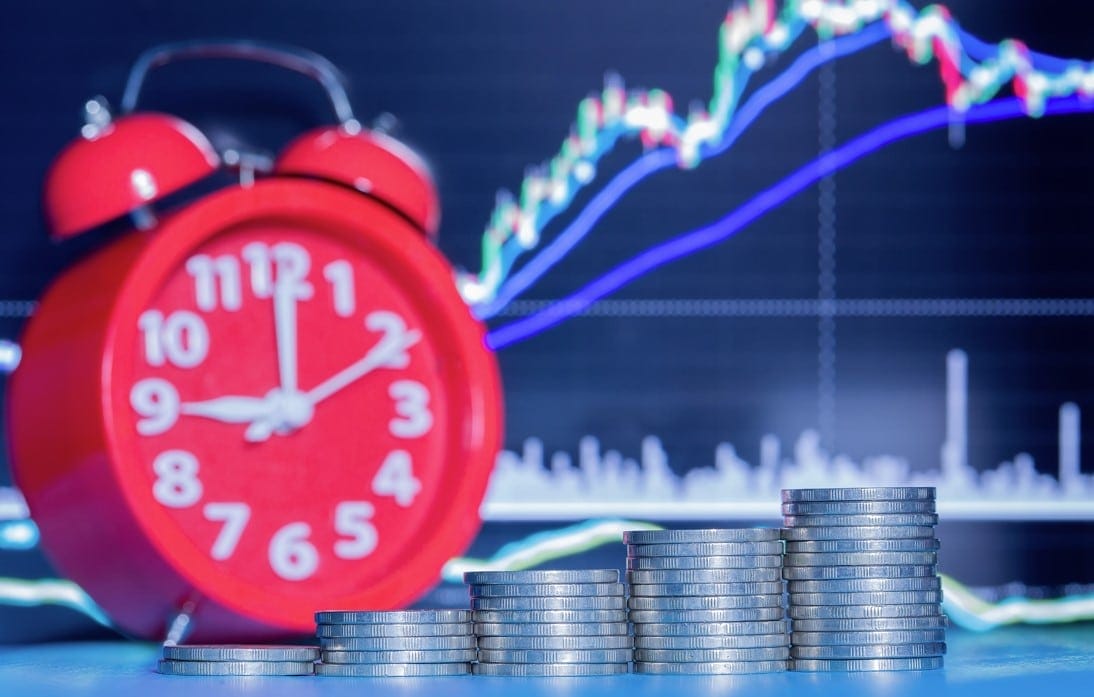
The Forex market operates 24 hours a day, five days a week, due to its decentralized nature and global reach. Different trading sessions have varying levels of activity:
Asian Session: This session starts in Tokyo and overlaps with Sydney. It is known for the trading of the Japanese Yen and other Asian currencies.
European Session: The London session is the most active of the three major sessions and often sets the tone for the day’s trading. It overlaps with the Asian session.
North American Session: The New York session is the last major session of the day and often sees increased volatility, especially during the overlap with the European session.
Understanding these trading sessions is important for timing your trades effectively based on your trading strategy and geographic location.
In summary, educating yourself about the Forex market involves grasping the basics of currency pairs, learning the market’s unique terminology, understanding the roles of various market participants, and being aware of the market’s 24-hour trading cycle. This foundational knowledge is crucial for beginners as it forms the basis for more advanced concepts and trading strategies in the Forex market.
2. Choose a Reliable Forex Broker
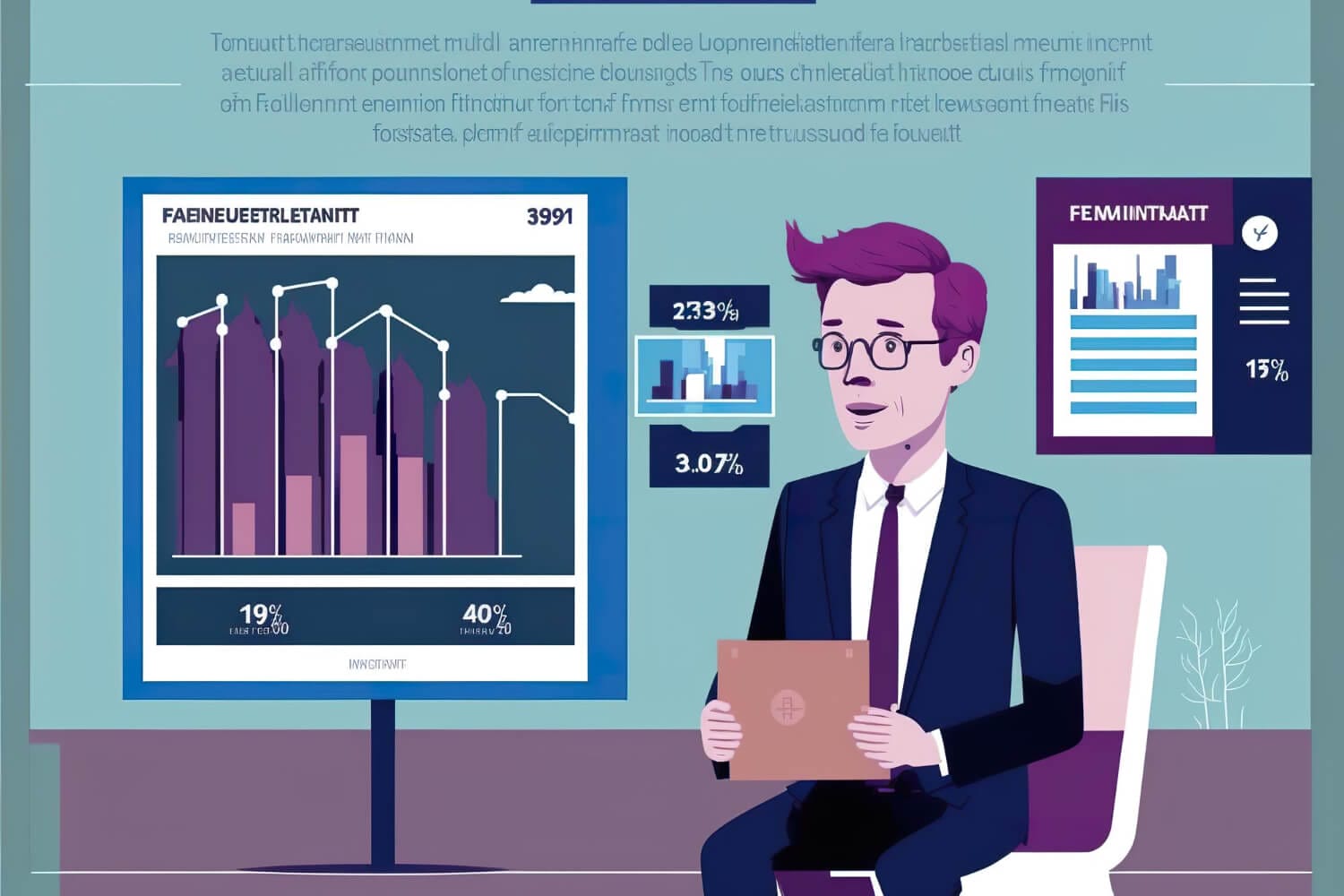
Selecting a reputable Forex broker is one of the most critical decisions a beginner trader can make. The broker you choose will be your gateway to the Forex market, so it’s essential to make an informed decision. Here’s a detailed breakdown of key considerations:
i. Regulation:
Regulation is a fundamental aspect of broker selection. It ensures that the broker operates within the legal framework and complies with financial industry standards. When evaluating a broker’s regulatory status, consider the following:
Regulatory Authority: Determine which regulatory body oversees the broker. Popular regulatory authorities include the Commodity Futures Trading Commission (CFTC) in the United States, the Financial Conduct Authority (FCA) in the United Kingdom, the Australian Securities and Investments Commission (ASIC), and the Cyprus Securities and Exchange Commission (CySEC).
License Verification: Check the broker’s website or the regulatory authority’s database to verify its license status. Ensure that the broker is in good standing and has no history of regulatory violations.
Investor Protection: Regulatory bodies often have investor protection measures in place, such as compensation schemes. These mechanisms can provide a safety net in case the broker faces financial difficulties.
ii. Trading Platforms:
Trading platforms are the tools you use to execute trades, conduct analysis, and manage your trading activities. It’s essential to choose a broker that offers a trading platform that suits your needs. Here are some points to consider:
Platform Options: Most brokers provide popular trading platforms like MetaTrader 4 (MT4) and MetaTrader 5 (MT5). These platforms are known for their user-friendly interfaces, extensive charting tools, and support for automated trading through Expert Advisors (EAs).
Mobile Trading: Ensure the broker offers mobile trading applications compatible with your device’s operating system (iOS, Android). Mobile apps allow you to trade on the go.
Platform Features: Evaluate the features and tools offered by the trading platform. Look for indicators, technical analysis tools, and customization options that align with your trading strategy.
iii. Fees and Commissions:

The cost of trading can significantly impact your profitability. Brokers may charge fees in various ways, so it’s important to understand their fee structure:
Spread: The spread is the difference between the bid (sell) and ask (buy) prices of a currency pair. Brokers often make money through spreads, so compare spreads across different brokers. Tighter spreads can be more cost-effective.
Commissions: Some brokers charge commissions on top of spreads, particularly for certain account types or trading styles. Be aware of these additional costs.
Overnight Financing (Swap Rates): If you hold positions overnight, you may incur overnight financing charges or earn interest, depending on the direction of your trade. These rates can vary between brokers.
Deposit and Withdrawal Fees: Check if the broker charges fees for depositing or withdrawing funds from your trading account.
iv. Customer Support:
Reliable customer support is crucial, especially when you encounter technical issues or have questions about your trading activities. Consider the following:
Support Channels: Determine the available support channels, such as phone, email, live chat, or a dedicated client portal. Multiple contact options can be convenient.
Response Time: Test the responsiveness of the broker’s customer support. You want timely assistance when needed.
Availability: Ensure that customer support is available during the hours you intend to trade, as Forex markets operate 24 hours a day.
Language Support: Confirm that customer support is available in your preferred language.
v. Account Types and Leverage:

Different brokers offer various types of trading accounts, each with its own features and requirements. Understanding these account types is essential:
Demo Accounts: Most brokers offer demo accounts for practice. These accounts allow you to trade with virtual money and familiarize yourself with the broker’s platform.
Live Accounts: Real trading accounts are where you use actual capital. Different brokers may offer various account types, such as micro, mini, or standard accounts, which have different minimum deposit requirements and leverage options.
Leverage: Leverage allows you to control a more substantial position size than your initial capital. While it can amplify profits, it also increases potential losses. Make sure the broker offers leverage options that align with your risk tolerance and trading strategy.
vi. Account Funding and Withdrawal:
Ease of funding and withdrawing funds from your trading account is essential. Consider the following:
Payment Methods: Check the available deposit and withdrawal methods, such as bank transfers, credit/debit cards, electronic wallets (e.g., PayPal, Skrill, Neteller), and cryptocurrencies. Ensure they are convenient for you.
Processing Time: Review the time it takes for deposits and withdrawals to be processed. Faster processing times can be advantageous, especially if you need to access your funds quickly.
Fees: Be aware of any fees associated with deposits or withdrawals. Some brokers may cover certain fees for specific payment methods.
vii. Trading Instruments and Asset Coverage:
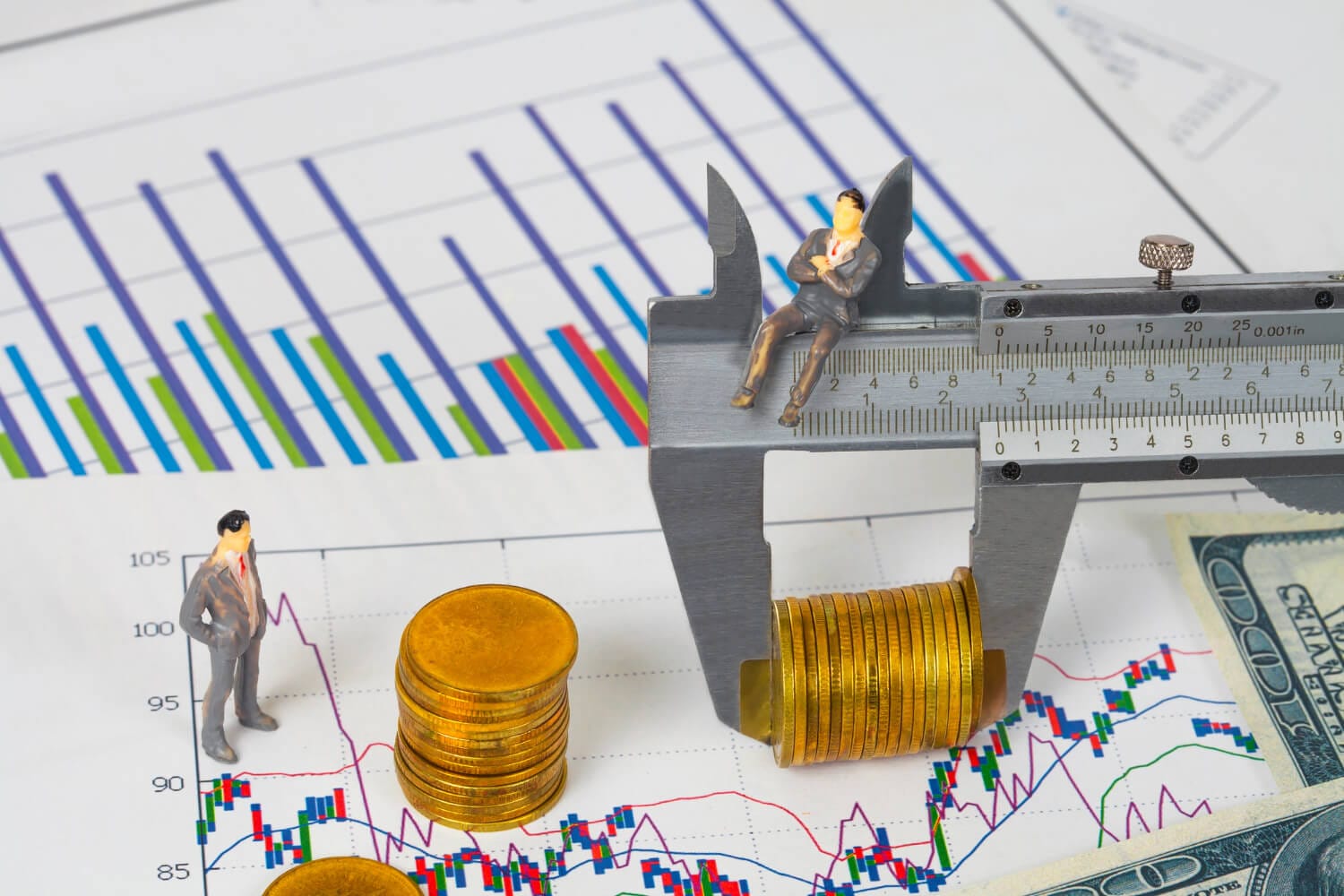
Forex brokers may offer a range of trading instruments beyond currency pairs. Depending on your trading interests, you may want access to other assets such as commodities, indices, stocks, or cryptocurrencies. Ensure that the broker provides the instruments you intend to trade.
viii. Research and Education:
Some brokers offer research materials, market analysis, and educational resources to help traders make informed decisions. These resources can be valuable for beginners looking to improve their trading skills and knowledge.
In summary, choosing a reliable Forex broker is a crucial step for beginner traders. Consider factors like regulation, trading platforms, fees, customer support, account types, leverage options, account funding methods, and the broker’s offerings in terms of trading instruments and educational resources. Thorough research and due diligence can help you select a broker that aligns with your trading goals and needs while ensuring a safe and transparent trading environment.
3. Develop a Solid Trading Plan
A trading plan is a systematic framework that outlines your approach to Forex trading. It serves as a roadmap, helping you make informed decisions, manage risk, and stay disciplined. Here’s a detailed breakdown of key elements in developing a solid trading plan:
i. Trading Goals:

Setting clear and achievable trading goals is the first step in building your plan. These goals should be specific, measurable, and time-bound. Common trading goals include:
Profit Targets: Determine how much profit you aim to make over a specific time frame. For example, you might set a goal of earning a 10% return on your capital in a month.
Risk Tolerance: Define your risk tolerance, which is the maximum amount of capital you’re willing to risk on a single trade or within a given period. This is usually expressed as a percentage of your total trading capital.
Time Commitment: Specify how much time you can dedicate to trading each day or week. Trading styles vary, and some require more time and attention than others.
Asset Selection: Decide which currency pairs or other assets you will trade. Focus on a few instruments initially to avoid spreading yourself too thin.
ii. Risk Management:
Risk management is a critical component of your trading plan, as it safeguards your capital and ensures that losing trades do not wipe out your account. Key aspects of risk management include:
Position Sizing: Determine the size of your positions based on your risk tolerance and the distance to your stop-loss level. Smaller position sizes reduce risk.
Stop–Loss Orders: Implement stop-loss orders for every trade to limit potential losses. A stop-loss order specifies the price at which you will exit a losing trade.
Risk–Reward Ratio: Establish a favorable risk-reward ratio for your trades. This ratio compares the potential reward (profit) to the risk (loss) on each trade. For example, a 2:1 risk-reward ratio means that for every $1 you risk, you aim to make $2 in profit.
Diversification: Avoid putting all your capital into a single trade or asset. Diversifying your trades can spread risk and reduce the impact of losses on your overall portfolio.
iii. Trading Strategy:

Your trading strategy outlines how you will enter and exit trades. Different trading strategies suit different goals and risk profiles. Common strategies include:
Scalping: Scalpers aim to make small, quick profits by entering and exiting trades within minutes or even seconds. They often use high leverage and execute numerous trades per day.
Day Trading: Day traders open and close positions within the same trading day. They may hold positions for a few minutes to several hours and rarely leave trades open overnight.
Swing Trading: Swing traders seek to capture price swings over a few days to weeks. They often use technical and fundamental analysis to identify potential entry and exit points.
Position Trading: Position traders take longer-term positions that can last weeks, months, or even years. They base their trades on fundamental analysis and long-term trends.
Your trading strategy should align with your goals, risk tolerance, and the time you can commit to trading.
iv. Trading Journal:
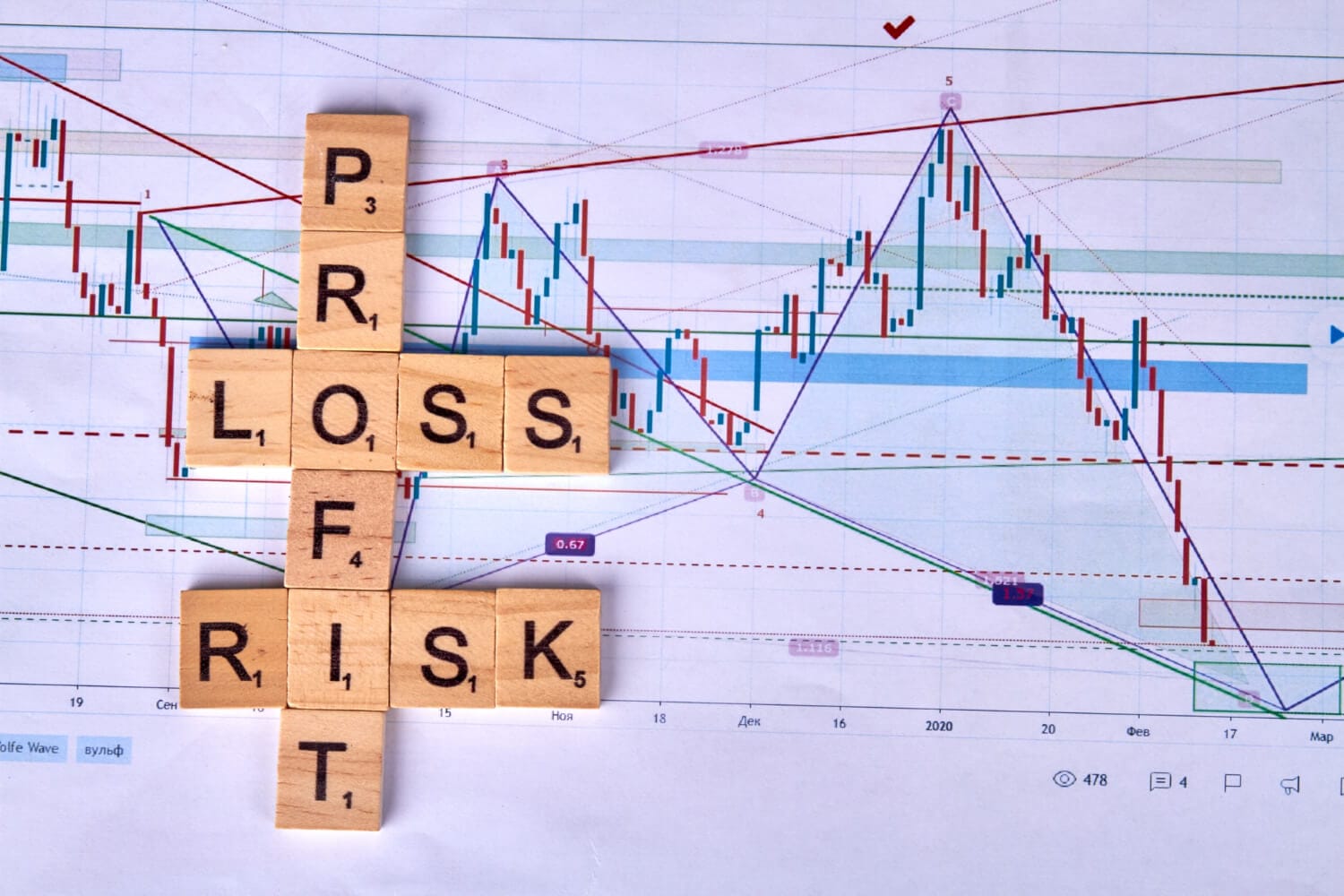
A trading journal is a record-keeping tool where you document your trades and trading-related activities. It helps you track your progress, identify patterns in your trading behavior, and learn from both successful and unsuccessful trades. Key elements of a trading journal include:
Trade Entries and Exits: Record the date and time of each trade, the currency pair or asset traded, entry and exit prices, and the reason for the trade.
Trade Size and Leverage: Document the position size and leverage used for each trade.
Stop–Loss and Take–Profit Levels: Include the stop-loss and take-profit levels set for each trade.
Trading Psychology: Reflect on your emotions and mindset during each trade. Note any fear, greed, or impatience that may have influenced your decisions.
Trade Outcomes: Track whether each trade resulted in a profit or loss. Analyze what went well and what could have been improved.
Market Conditions: Note any relevant market conditions or news events that may have affected your trades.
Adjustments and Strategy Changes: Document any adjustments you make to your trading plan or strategy based on your journal analysis.
By maintaining a detailed trading journal, you can gain valuable insights into your trading performance and continually improve your approach.
v. Review and Adaptation:
Regularly review your trading plan and journal to assess your progress and adapt to changing market conditions. Here’s how you can approach this:
Scheduled Reviews: Set aside time for periodic reviews of your trading plan and performance. This can be daily, weekly, or monthly, depending on your trading frequency.
Learn from Mistakes: Analyze your losing trades to identify patterns or mistakes. Determine if there are common errors you can avoid in the future.
Refine Your Strategy: Use insights from your trading journal to refine your trading strategy. Consider tweaking your entry and exit criteria or risk management rules.
Stay Updated: Keep yourself informed about changes in the Forex market, economic events, and geopolitical developments. Adapt your trading plan as needed to align with evolving market conditions.
In summary, developing a solid trading plan is a critical step for Forex traders, especially beginners. Your plan should include specific and achievable trading goals, a robust risk management strategy, a trading strategy that suits your goals and risk tolerance, a comprehensive trading journal for self-assessment, and a commitment to regular reviews and adaptations. A well-crafted trading plan provides structure, discipline, and a clear path toward becoming a successful and profitable trader over time.
4. Practice with a Demo Account
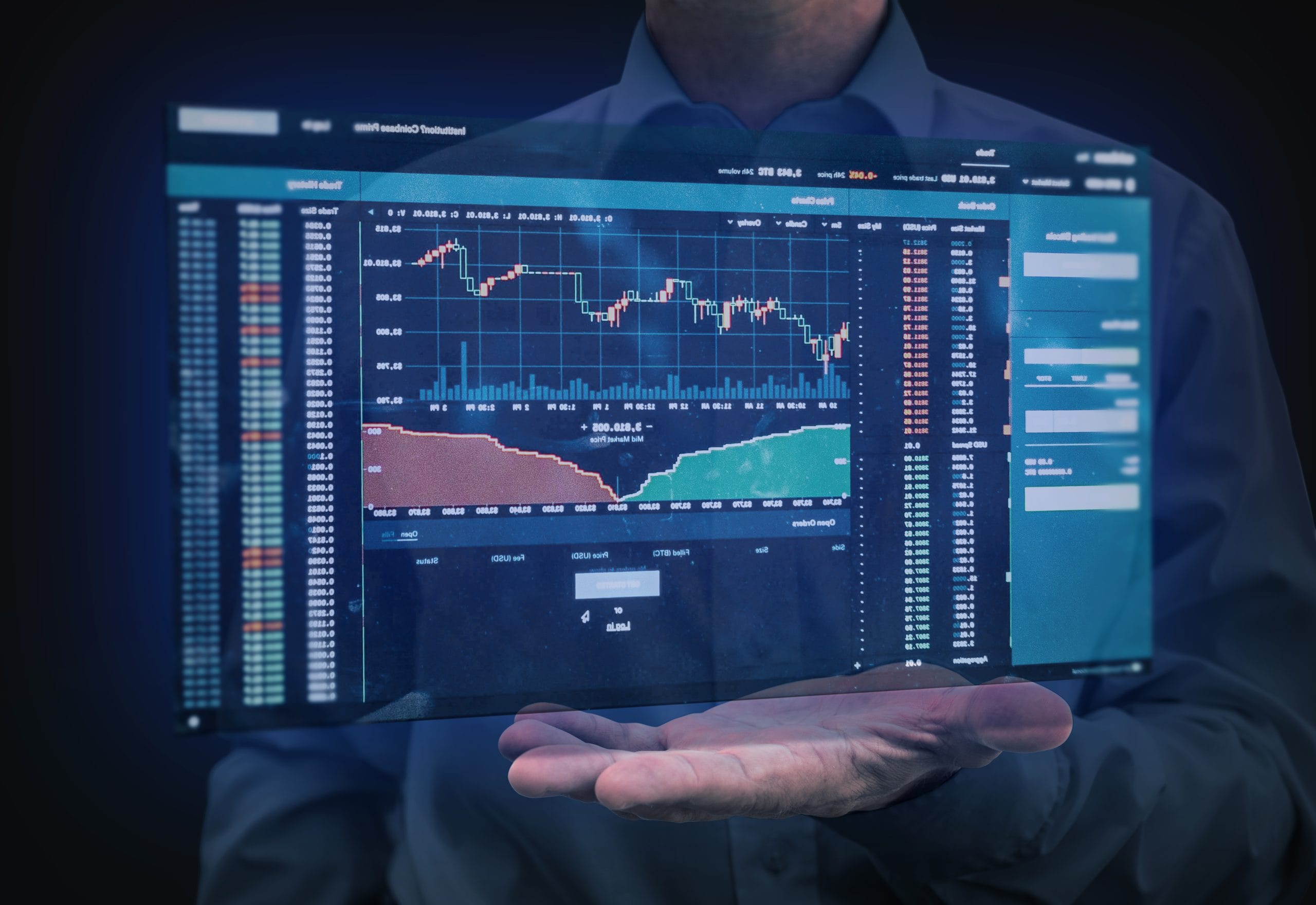
Using a demo account is a crucial step for beginners in Forex trading. It allows you to gain valuable experience and confidence in a risk-free environment before you start trading with real money. Here’s a detailed breakdown of the key aspects of practicing with a demo account:
i. Realistic Simulation:
Purpose: The primary purpose of a demo account is to simulate real trading conditions without risking your capital. It offers a risk-free environment for you to practice and apply your trading strategies.
Virtual Funds: Demo accounts provide you with virtual funds (play money) that you can use to execute trades. These funds mimic the value of real money in the Forex market.
Real Market Data: The price data and market conditions you see in a demo account are identical to those in live trading. This enables you to experience real market volatility and movements.
Psychological Preparation: Trading with a demo account helps you become accustomed to the emotions and psychological aspects of trading, such as dealing with wins and losses.
ii. Experiment with Strategies:
Testing Strategies: Use your demo account to experiment with different trading strategies. This includes technical analysis, fundamental analysis, and the application of various indicators and tools.
Risk–Free Testing: Since you’re not using real money, you can test your strategies thoroughly without the fear of losing capital. This allows you to refine your approach and build confidence.
Strategy Development: Demo trading is an excellent opportunity to develop and fine-tune your trading strategy. You can see how your strategy performs in different market conditions.
iii. Transition Gradually:
Gradual Transition: Once you’ve gained confidence and are consistently profitable on a demo account, consider transitioning to live trading gradually.
Start Small: When transitioning to a live account, start with a small amount of capital that you can afford to lose. This minimizes risk while you adapt to real market conditions.
Maintain Disciplined Practices: Carry forward the discipline and risk management practices you’ve developed while using a demo account into your live trading.
iv. Mistakes Are Learning Opportunities:

Learn from Mistakes: Mistakes made in a demo account are valuable learning opportunities. Whether it’s misjudging market conditions or errors in execution, each mistake can help you become a better trader.
Identify Weaknesses: Analyze your losing trades and identify weaknesses in your strategy or approach. Use this knowledge to make necessary adjustments.
v. Focus on Realistic Trading:
Trade as If It’s Real: Treat your demo account as if it were a real account. This means adhering to your trading plan, risk management rules, and strategies just as you would with real money.
Avoid Overtrading: Resist the urge to overtrade or take excessive risks with a demo account. This practice can lead to unrealistic expectations and poor trading habits.
Emotional Control: Work on developing emotional control while trading in a simulated environment. Learn to manage fear and greed as they can significantly impact your trading decisions.
vi. Record Keeping:
Use a Trading Journal: Even in a demo account, maintaining a trading journal is essential. Record your trade entries, exits, reasons for the trades, and outcomes. This habit will carry over into live trading and aid in your development as a trader.
vi. Evaluation and Progress:
Track Your Progress: Regularly assess your performance in the demo account. Monitor metrics like win rate, risk-reward ratios, and overall profitability. Evaluate whether you are meeting your trading goals.
Adjust and Improve: Based on your evaluation, make necessary adjustments to your trading strategy and approach. Aim for continuous improvement in your trading skills.
In summary, practicing with a demo account is an invaluable step in your Forex trading journey as a beginner. It offers a safe and controlled environment for you to gain experience, test trading strategies, develop discipline, and build confidence without risking real capital. Utilize the demo account to its fullest potential, treating it as if it were a real account, and use the experience gained to transition into live trading with greater proficiency and preparation. Remember that consistent practice and learning are essential for long-term success in Forex trading.
5. Master Technical and Fundamental Analysis
Technical and fundamental analysis are two primary methods traders use to analyze the Forex market and make informed trading decisions. Mastering these analyses is crucial for success. Here’s a detailed breakdown of each approach:
i. Technical Analysis:

Purpose: Technical analysis involves examining historical price data, chart patterns, and technical indicators to forecast future price movements. Traders use this analysis to identify trends, support and resistance levels, and potential entry and exit points.
Key Components:
- Price Charts: Price charts are the foundation of technical analysis. Common chart types include line charts, bar charts, and candlestick charts. Candlestick charts are widely used for their visual representation of price action.
- Chart Patterns: Traders look for chart patterns, such as head and shoulders, double tops and bottoms, flags, and pennants, which can signal potential trend reversals or continuations.
- Technical Indicators: These mathematical calculations based on historical price and volume data help traders gauge market sentiment. Popular technical indicators include moving averages, Relative Strength Index (RSI), Moving Average Convergence Divergence (MACD), and Bollinger Bands.
- Support and Resistance: Traders identify support levels (where prices tend to find buying interest) and resistance levels (where prices encounter selling pressure). These levels help determine entry and exit points.
- Trend Analysis: Identifying the direction of the prevailing trend is crucial. Trends can be bullish (upward), bearish (downward), or sideways (range-bound).
- Pattern Recognition: Traders develop the ability to recognize recurring chart patterns and understand their implications.
ii. Fundamental Analysis:

Purpose: Fundamental analysis focuses on economic, political, and social factors that influence currency prices. Traders using this analysis aim to assess the intrinsic value of a currency and make trading decisions based on economic data and events.
Key Components:
- Economic Indicators: Traders pay close attention to economic indicators like GDP growth, employment numbers, inflation rates, and consumer sentiment. These indicators can provide insights into a country’s economic health.
- Interest Rates: Central banks use interest rates to control inflation and stimulate or cool down economic activity. Traders watch for changes in interest rates as they can impact currency values.
- Geopolitical Events: Political stability, trade agreements, and international relations can influence currency values. Unexpected geopolitical events can lead to sharp price movements.
- Economic Events: Economic events such as elections, referendums, and government policies can have significant effects on currency markets.
- Market Sentiment: Traders also consider market sentiment and news. Positive or negative news can drive short-term price movements.
iii. Sentiment Analysis:
Purpose: Sentiment analysis involves assessing the overall mood or sentiment of market participants towards a currency or asset. It’s often used in conjunction with technical and fundamental analysis to gauge market direction.
Key Components:
- News Sentiment: Traders monitor news sources to gauge the impact of news events on market sentiment. Positive news can boost a currency’s value, while negative news can lead to declines.
- Trader Positioning: Some traders analyze trader positioning data, such as the Commitment of Traders (COT) report, which shows the positions of large traders like institutional investors and commercial hedgers.
- Market Mood: Traders assess the collective mood of the market to determine whether it’s bullish (optimistic), bearish (pessimistic), or neutral.
iv. Combining Analysis Techniques:

Many traders use a combination of technical, fundamental, and sentiment analysis to make well-informed trading decisions. For example:
Fundamental analysis may inform traders about the long-term direction of a currency based on economic fundamentals.
Technical analysis can help identify entry and exit points within the broader fundamental trend.
Sentiment analysis can provide a short-term perspective on market sentiment, helping traders anticipate short-term price movements.
v. Continuous Learning and Adaptation:
The Forex market is dynamic, and market conditions can change rapidly. Therefore, mastering technical and fundamental analysis is an ongoing process. Traders must continuously educate themselves, stay updated on economic events and news, and adapt their strategies to evolving market conditions.
In summary, mastering technical and fundamental analysis is essential for successful Forex trading. Technical analysis involves studying price charts, patterns, and technical indicators to forecast price movements. Fundamental analysis focuses on economic and geopolitical factors that influence currency values. Sentiment analysis assesses market mood and trader positioning. Combining these analyses and staying committed to continuous learning and adaptation is key to becoming a proficient Forex trader.
6. Manage Risk Effectively

Risk management is a critical aspect of Forex trading that can help protect your capital and minimize potential losses. Effective risk management ensures that you can stay in the game even when faced with losing trades. Here’s a detailed breakdown of how to manage risk effectively in Forex trading:
i. Position Sizing:
Define Risk Per Trade: Before entering any trade, determine the amount of capital you are willing to risk on that trade. This is typically expressed as a percentage of your total trading capital. A common risk per trade might be 1% to 2% of your trading capital.
Calculate Position Size: Once you’ve defined your risk per trade, calculate the position size based on your stop-loss level. The position size should ensure that if the stop-loss is hit, you lose no more than the predetermined risk amount.
ii. Set Stop-Loss Orders:
Use Stop-Loss Orders: Always use stop-loss orders for every trade. A stop-loss order specifies the price at which you will exit a losing trade. It acts as a safety net to limit potential losses.
Place Stops Wisely: Set your stop-loss levels based on technical or fundamental analysis, taking into account support and resistance levels, volatility, and your risk tolerance. Avoid placing stops too close to your entry point, as this can lead to premature exits due to market noise.
iii. Diversification:
Spread Risk: Avoid putting all your capital into a single trade or currency pair. Diversify your trades across multiple assets or currency pairs. This can help spread risk and reduce the impact of losses on your overall portfolio.
Correlation Considerations: Be mindful of correlations between currency pairs. Some currencies are closely correlated, meaning they tend to move in the same direction. Diversifying across uncorrelated pairs can be more effective in managing risk.
iv. Risk-Reward Ratio:
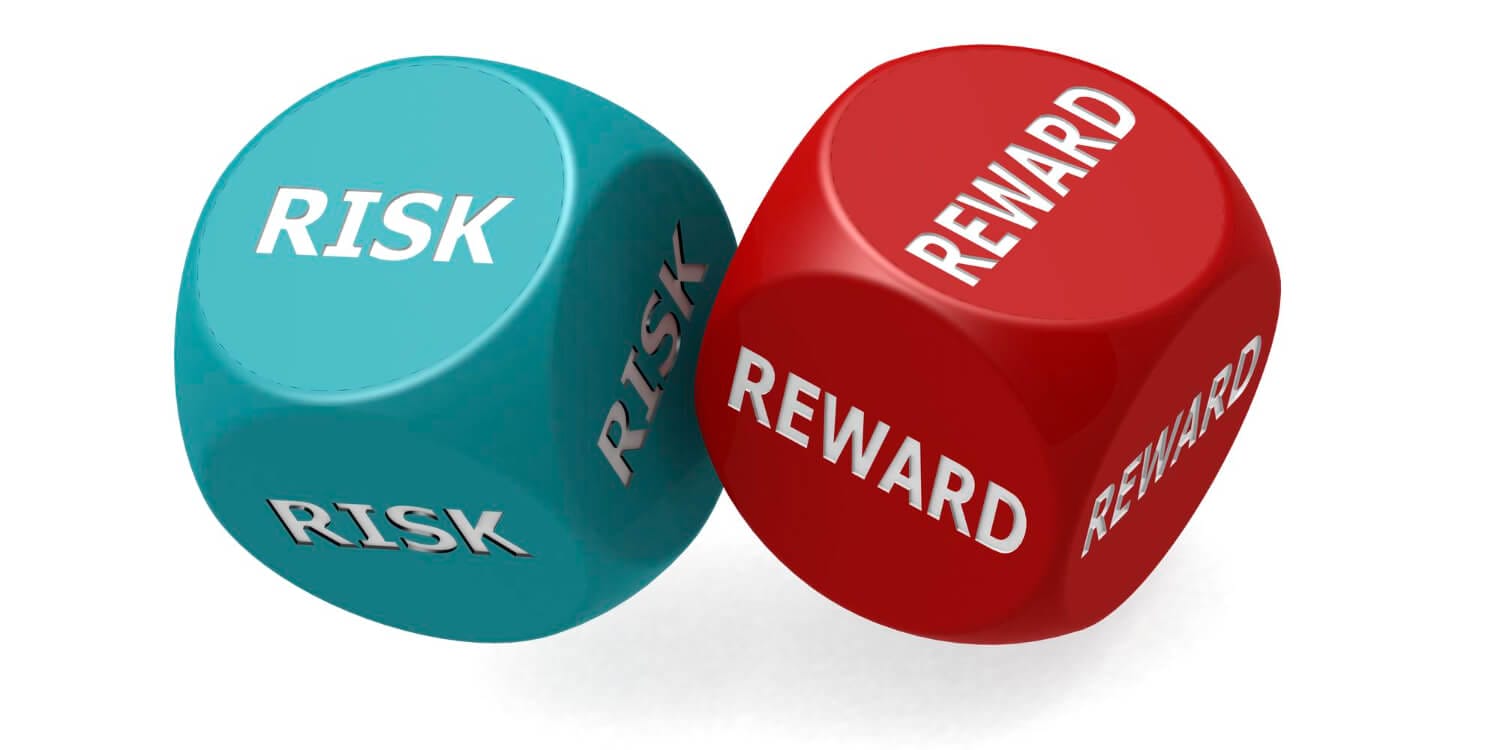
Maintain Favorable Ratios: Ensure that your risk-reward ratio is favorable. This ratio compares the potential reward (profit) to the risk (loss) on each trade. A common risk-reward ratio might be 1:2, meaning you aim to make twice the amount you are risking on a trade.
Consistency in Ratios: Be consistent in applying your chosen risk-reward ratio to all your trades. This helps ensure that profitable trades outweigh losing ones over time.
v. Avoid Overleveraging:
Use Leverage Wisely: While leverage can amplify profits, it also increases potential losses. Use leverage cautiously, and ensure that the amount of leverage you employ aligns with your risk tolerance and trading strategy.
Leverage Limits: Many brokers offer different leverage levels, so choose one that allows you to trade comfortably within your risk parameters. Avoid excessive leverage that could lead to margin calls and substantial losses.
vi. Risk Management Tools:
Trailing Stops: Consider using trailing stops, which automatically adjust your stop-loss level as the market moves in your favor. This allows you to capture profits while protecting your capital.
Hedging: Some traders use hedging strategies to offset potential losses in one position with gains in another. However, hedging can be complex and may not be suitable for all traders.
Risk Management Software: There are risk management tools and software available that can help you calculate position sizes and assess the potential impact of trades on your capital.
vii. Emotional Discipline:
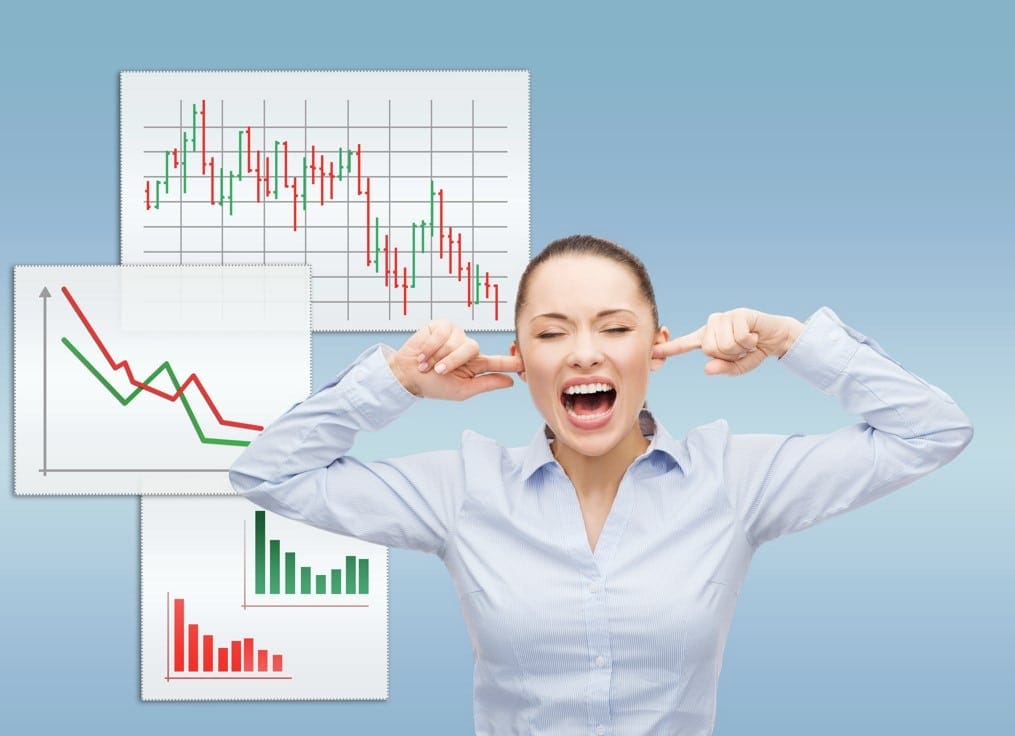
Stay Emotionally Detached: Emotional discipline is crucial in risk management. Avoid making impulsive decisions based on fear or greed. Stick to your trading plan, risk parameters, and stop-loss levels, regardless of market emotions.
viii. Regular Assessment:
Review and Adjust: Periodically assess your risk management practices and overall trading plan. As your trading capital grows or market conditions change, you may need to adjust your risk parameters accordingly.
ix. Continuous Learning:
Educate Yourself: Continue to educate yourself on risk management techniques and strategies. The more you learn, the better equipped you’ll be to manage risk effectively.
In summary, effective risk management is a cornerstone of successful Forex trading. It involves position sizing, setting stop-loss orders, diversification, maintaining favorable risk-reward ratios, avoiding overleveraging, and staying emotionally disciplined. Risk management helps protect your trading capital and ensures that you can weather losses while pursuing long-term profitability in the Forex market.
7. Maintain Emotional Discipline

Emotional discipline is a critical aspect of successful Forex trading. The ability to control emotions such as fear, greed, and impatience can help traders make rational decisions and avoid costly mistakes. Here’s a detailed breakdown of how to maintain emotional discipline in Forex trading:
i. Understand Common Emotional Challenges:
Fear: Fear can lead to hesitation, causing traders to miss opportunities or exit trades prematurely. It can also lead to overprotective risk management, such as setting stop-loss levels too close to the entry point.
Greed: Greed can push traders to take excessive risks in pursuit of larger profits. It can also cause traders to hold onto winning trades for too long, hoping for even higher returns.
Impatience: Impatience can lead to impulsive trading decisions, such as entering trades without proper analysis or closing positions prematurely out of frustration.
ii. Develop a Trading Plan:
Establish Rules: A well-defined trading plan with clear rules can help mitigate the impact of emotions. Rules for entry and exit, risk management, and position sizing should be part of your plan.
Stick to Your Plan: Commit to following your trading plan consistently. Avoid deviating from your plan based on emotional reactions to market movements.
iii. Use Stop-Loss Orders:
Prevent Emotional Decisions: Implementing stop-loss orders helps prevent emotional decisions during trades. Knowing that there is a predetermined exit point in case of adverse price movements can reduce anxiety.
Set Realistic Stop Levels: Place stop-loss levels based on technical analysis and market conditions rather than fear-driven decisions.
iv. Practice Patience:

Wait for Confirmation: Avoid rushing into trades without proper confirmation from your analysis. Patiently wait for your entry criteria to be met.
Resist Overtrading: Impatience can lead to overtrading. Stick to your trading plan’s guidelines regarding the number of trades you take in a given time frame.
v. Accept That Losses Are Part of Trading:
Embrace Losses: Understand that losses are an inherent part of trading. Even experienced traders face losses. Embracing losses as learning opportunities can help you maintain a healthier emotional state.
Avoid Revenge Trading: After a loss, resist the urge to enter another trade immediately to recover losses. Revenge trading often leads to more significant losses.
vi. Control Your Risk Tolerance:
Set Realistic Expectations: Ensure that your risk tolerance aligns with your trading strategy and financial situation. Unrealistic expectations can lead to emotional stress.
Risk Only What You Can Afford to Lose: Never risk more than you can afford to lose. This helps alleviate financial stress and emotional pressure.
vii. Use Positive Visualization:
Visualization Techniques: Some traders use positive visualization techniques to manage emotions. Mentally rehearse successful trades and visualize calm and rational decision-making.
viii. Take Breaks and Manage Stress:

Avoid Burnout: Trading can be stressful. Take regular breaks to prevent burnout. Physical exercise, relaxation techniques, and hobbies outside of trading can help manage stress.
Healthy Lifestyle: A balanced diet, adequate sleep, and managing overall stress levels contribute to emotional discipline.
ix. Keep a Trading Journal:
Record Emotional States: In your trading journal, note your emotional states during trades. This can help you identify patterns of emotional behavior that affect your decision-making.
Learn from Emotional Responses: Analyze your emotional responses to winning and losing trades. Learn from your experiences to improve emotional discipline over time.
x. Seek Support and Mentorship:
Talk to Fellow Traders: Sharing experiences and challenges with other traders can provide emotional support and valuable insights.
Consider a Mentor: Some traders benefit from having a mentor who can offer guidance and help them maintain emotional discipline.
In summary, maintaining emotional discipline is crucial for Forex trading success. Understand common emotional challenges, develop a structured trading plan, use stop-loss orders, practice patience, accept losses as part of trading, control your risk tolerance, use positive visualization techniques, manage stress, keep a trading journal, and seek support and mentorship if needed. By prioritizing emotional discipline, you can make rational decisions and improve your overall trading performance.
8. Stay Informed About Market News and Events

Being well-informed about market news and events is essential for successful Forex trading. Currency markets are highly influenced by economic, political, and geopolitical developments. Staying updated on relevant news can help you make informed trading decisions. Here’s a detailed breakdown of how to stay informed about market news and events:
i. Economic Calendar:
Use an Economic Calendar: Economic calendars are essential tools for traders. They provide a schedule of upcoming economic events, including releases of key economic indicators such as GDP, employment data, inflation reports, and central bank interest rate decisions.
Event Impact Ratings: Economic calendars often assign impact ratings to events, indicating their potential influence on the market. High-impact events can lead to significant price movements.
Plan Around Events: Consider the economic calendar when planning your trades. Avoid opening or holding positions during high-impact events if you’re uncomfortable with the associated volatility and uncertainty.
ii. Financial News Sources:
Regularly Monitor News: Stay updated by regularly reading financial news from reputable sources such as Bloomberg, Reuters, CNBC, Financial Times, and dedicated financial news websites.
Use News Apps: Consider using news apps or subscribing to news alerts that notify you of important developments in real-time.
iii. Central Bank Announcements:

Focus on Central Banks: Central banks, such as the Federal Reserve (Fed), European Central Bank (ECB), and Bank of Japan (BOJ), play a crucial role in currency markets. Pay close attention to their policy announcements and statements, as they can have a significant impact on currency values.
Interest Rate Decisions: Central banks often use interest rate decisions to influence economic conditions. Be prepared for market volatility around these announcements.
iv. Geopolitical Developments:
Global Events: Geopolitical events, such as elections, trade negotiations, and international conflicts, can have a profound impact on currency markets. Stay informed about global developments that may affect the countries whose currencies you trade.
Government Policies: Be aware of government policies and their potential consequences on currencies. For example, fiscal and monetary policies can impact inflation, interest rates, and economic growth.
v. Technical Analysis and News Correlation:
Combine with Technical Analysis: Consider combining news analysis with technical analysis. For example, look for technical patterns that align with news-driven price movements.
Verify Information: Confirm news information with technical analysis to verify whether market sentiment aligns with news events.
vi. Social Media and Forums:

Use Caution: Social media platforms and trading forums can be sources of news and opinions. However, exercise caution and verify information from reliable sources, as social media can also spread rumors and misinformation.
vii. Forex Brokers and Platforms:
Broker Resources: Some Forex brokers offer news feeds and research tools on their trading platforms. Explore these resources to stay updated on market news.
Market Analysis: Forex brokers often provide market analysis and commentary from their in-house experts. This can be a valuable source of information.
viii. Currency Pair Relevance:
Focus on Relevant Pairs: Concentrate on news that directly affects the currency pairs you trade. For example, if you predominantly trade EUR/USD, closely monitor news related to the Eurozone and the United States.
ix. Adapt to Market Sentiment:
Adjust Trading Strategies: Market sentiment can shift rapidly in response to news. Be prepared to adjust your trading strategies and positions based on changing sentiment.
x. Avoid Emotional Trading:
Stay Informed, Not Impulsive: While staying informed is crucial, avoid making impulsive trading decisions solely based on news events. Use news as part of your overall analysis and maintain discipline in your trading.
In summary, staying informed about market news and events is a fundamental aspect of Forex trading. Utilize economic calendars, monitor reputable financial news sources, pay attention to central bank announcements and geopolitical developments, and consider how news aligns with technical analysis. Keep in mind that while staying informed is vital, it should be part of a comprehensive trading strategy that includes technical and fundamental analysis, risk management, and emotional discipline.
9. Practice Proper Record Keeping

Proper record keeping is a fundamental aspect of Forex trading that can provide several benefits, including accountability, improvement, and tax compliance. Here’s a detailed breakdown of the importance and key aspects of practicing proper record keeping in Forex trading:
i. Trading Journal:
Purpose: A trading journal is a log where you record all your trading-related activities, including trade entries, exits, reasons for trades, and outcomes. The primary purpose of a trading journal is to track your trading performance systematically.
Entry and Exit Details: For each trade, record the date and time of entry and exit, the currency pair or asset traded, entry and exit prices, and the reason for the trade.
Position Size and Leverage: Document the size of your positions and the leverage used for each trade.
Stop-Loss and Take-Profit Levels: Include the stop-loss and take-profit levels set for each trade.
Trading Psychology: Reflect on your emotions and mindset during each trade. Note any fear, greed, or impatience that may have influenced your decisions.
Trade Outcomes: Track whether each trade resulted in a profit or a loss. Analyze what went well and what could have been improved.
Market Conditions: Note any relevant market conditions or news events that may have affected your trades.
Adjustments and Strategy Changes: Document any adjustments you make to your trading plan or strategy based on your journal analysis.
ii. Benefits of a Trading Journal:
Performance Evaluation: A trading journal allows you to assess your trading performance objectively. You can identify patterns in your trading behavior and determine what’s working and what needs improvement.
Learning from Mistakes: Analyzing losing trades in your journal can help you identify common errors or recurring mistakes. This information can guide you in making necessary improvements.
Accountability: Maintaining a trading journal holds you accountable for your trading decisions. It encourages discipline and adherence to your trading plan.
Improved Decision-Making: By reviewing past trades in your journal, you can learn from both successful and unsuccessful trades. This can lead to better decision-making in the future.
iii. Trade Statements:

Broker Statements: Keep a record of your monthly or quarterly statements from your Forex broker. These statements provide a summary of your account activity, including deposits, withdrawals, and trading results.
Tax Records: Accurate trade statements are essential for tax compliance. They provide a detailed record of your trading activity, which can be useful when calculating capital gains or losses for tax purposes.
iv. Backtesting Records:
Backtesting Data: If you engage in backtesting (simulating your trading strategy with historical data), keep records of the data used, the parameters tested, and the results. This helps you assess the viability of your strategy before applying it in live trading.
Adjustments Based on Backtesting: If you make changes to your trading strategy based on backtesting results, document these adjustments in your trading plan.
v. Trade Confirmations:
Confirmations from Your Broker: When you place trades with your broker, you typically receive trade confirmations. These documents provide details of the executed trades, including the price at which the trade was executed and any associated fees.
vi. Organize and Archive Records:
Digital and Hard Copies: Consider keeping both digital and hard copies of your trading records. Digital records can be organized in spreadsheets or specialized trading journal software, while hard copies can be stored in physical folders or binders.
Regular Backup: Back up your digital records regularly to prevent data loss.
vii. Privacy and Security:

Protect Personal Information: Ensure that your trading records do not contain sensitive personal information. If using digital tools, maintain proper cybersecurity practices to protect your data.
viii. Regular Review:
Scheduled Review: Set aside time for regular reviews of your trading journal and records. This can be daily, weekly, or monthly, depending on your trading frequency.
Learn and Adjust: Use your record-keeping data to identify areas for improvement in your trading strategy, risk management, and decision-making. Adjust your trading plan as needed based on your findings.
ix. Compliance with Regulations:
Tax Compliance: Accurate record keeping is crucial for tax compliance. Depending on your jurisdiction, you may be required to report capital gains or losses from your Forex trading activities.
In summary, practicing proper record keeping is essential for Forex traders. A trading journal, trade statements, backtesting records, and trade confirmations all contribute to a comprehensive record-keeping system. These records help you evaluate your performance, learn from your trading experiences, maintain accountability, and comply with tax regulations. By diligently maintaining your trading records, you can enhance your trading skills and make more informed decisions in the Forex market.
10. Continuous Learning and Improvement

Continuous learning and improvement are fundamental principles for success in Forex trading. The financial markets are dynamic, and staying ahead requires a commitment to ongoing education and self-improvement. Here’s a detailed breakdown of the importance and key aspects of continuous learning and improvement in Forex trading:
i. Stay Updated with Market Developments:
Market Changes: Forex markets can experience changes in volatility, liquidity, and trading conditions. Stay updated with market developments, economic events, and geopolitical factors that may impact currency prices.
Economic Calendar: Regularly consult an economic calendar to be aware of upcoming economic releases and events that could influence market sentiment.
ii. Educational Resources:
Books: Read books on Forex trading, technical analysis, and fundamental analysis to deepen your knowledge. Some classic trading books, like “Japanese Candlestick Charting Techniques” by Steve Nison or “The Art and Science of Technical Analysis” by Adam Grimes, can provide valuable insights.
Online Courses: Enroll in online courses and educational programs offered by reputable institutions or experienced traders. These courses often cover a wide range of topics, from basic concepts to advanced trading strategies.
Webinars and Seminars: Attend webinars and seminars conducted by experts in the field. These events can provide valuable insights and opportunities for interaction with experienced traders.
Forums and Communities: Join online trading forums and communities to connect with fellow traders, share experiences, and learn from others’ insights. However, exercise caution and verify information from reliable sources.
iii. Trading Simulations and Backtesting:
Simulated Trading: Continue practicing with demo accounts to refine your trading strategies and test new ideas without risking real capital.
Backtesting: Backtest your trading strategies with historical data to assess their effectiveness. Identify areas for improvement and refine your strategies based on the results.
iv. Review and Analysis:
Trading Journal: Continuously review your trading journal to assess your performance, identify patterns, and learn from both winning and losing trades. Use this information to refine your approach.
Post-Trade Analysis: After each trade, conduct a post-trade analysis to evaluate the decision-making process and execution. Identify strengths and weaknesses and make adjustments accordingly.
v. Mentorship and Guidance:

Mentorship: Consider seeking mentorship from an experienced trader who can provide guidance, feedback, and insights based on their own experiences.
Courses and Workshops: Attend trading courses, workshops, or mentorship programs offered by experienced traders or institutions. Learning from someone with a proven track record can accelerate your progress.
vi. Psychological and Emotional Development:
Mindfulness: Practice mindfulness techniques to enhance emotional discipline and reduce impulsive behavior. Techniques such as meditation and mindfulness can help you stay calm and focused during trading.
Self-Reflection: Regularly reflect on your trading psychology and emotional responses to market events. Identify any recurring emotional challenges and work on addressing them.
vii. Adapt to Changing Market Conditions:
Market Evolution: Recognize that market conditions can change over time. Be flexible in adapting your strategies and approaches to align with evolving market dynamics.
Risk Management: Continuously refine your risk management strategies to protect your capital in different market environments.
viii. Networking:
Networking Events: Attend trading conferences and networking events to connect with other traders, exchange ideas, and build relationships within the trading community.
ix. Stay Humble and Manage Ego:

Avoid Overconfidence: Trading success can sometimes lead to overconfidence. Stay humble and remember that markets can be unpredictable. Overconfidence can lead to costly mistakes.
Learn from Mistakes: Embrace mistakes and losses as learning opportunities. Avoid blaming external factors and take responsibility for your decisions.
x. Regulatory Compliance:
Stay Informed on Regulations: Depending on your location, Forex trading may be subject to regulations. Stay informed about the regulatory environment in your jurisdiction and ensure compliance with relevant rules and requirements.
In summary, continuous learning and improvement are vital for Forex traders who aspire to achieve long-term success. Staying updated with market developments, leveraging educational resources, practicing with simulations and backtesting, conducting regular reviews and analyses, seeking mentorship, focusing on psychological development, adapting to changing market conditions, networking, managing ego, and ensuring regulatory compliance are all essential components of continuous growth as a trader. By committing to ongoing education and self-improvement, you can enhance your skills, refine your strategies, and ultimately become a more proficient and successful Forex trader.
conclusion
In summary, these ten essential Forex trading tips for beginners provide a solid foundation for navigating the Forex market successfully. By educating yourself, choosing a reliable broker, developing a robust trading plan, practicing with a demo account, mastering analysis techniques, managing risk, maintaining emotional discipline, staying informed, continuously learning, and exercising patience and discipline, you can increase your chances of becoming a successful Forex trader over time. Remember that Forex trading is a journey, and consistent learning and adaptation are essential for long-term success.
Don’t trade all the time, trade forex only at the confirmed trade setups.
Get more confirmed trade setups here: forexgdp.com/buy/
